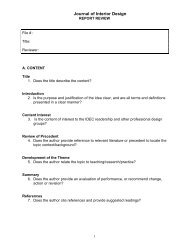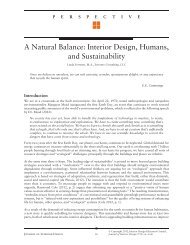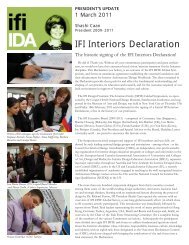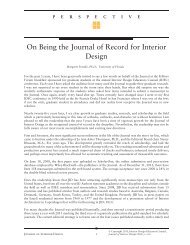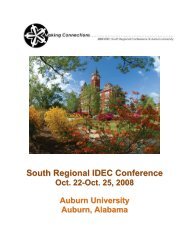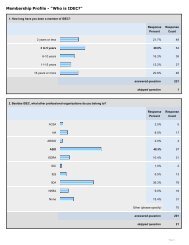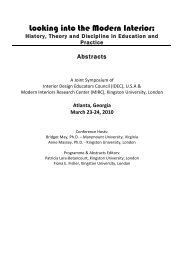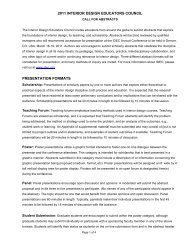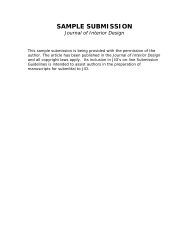2002 Conference Proceedings - Interior Design Educators Council
2002 Conference Proceedings - Interior Design Educators Council
2002 Conference Proceedings - Interior Design Educators Council
Create successful ePaper yourself
Turn your PDF publications into a flip-book with our unique Google optimized e-Paper software.
PurposeThe purpose of this experiment was to compare the effect of group interactivebrainstorming (social interaction) to individual brainstorming on individual creativity byassessing creativity in the final product of a complex heuristic task.The hypothesis tested was that participation in-group verbally interactive brainstormingprior to developing a design solution would not facilitate creativity more than individualbrainstorming. Indeed, it was hypothesized that individuals brainstorming alone wouldproduce more creative projects than individuals brainstorming in teams.MethodologyParticipants were 36 interior design students in a FIDER accredited interior designprogram. The Multidimensional Stimulus Fluency Measure (MSFM) was administeredbefore beginning the experiment to determine individual differences in creativity.Subjects were randomly assigned to either a treatment group that participated in verballyinteractive brainstorming or a control group that participated in an individualbrainstorming session. All subjects then created design projects individually that wereassessed for creativity by judges who were recruited from professional interior designorganizations. Creativity was measured using the Consensual Assessment for <strong>Interior</strong><strong>Design</strong> Creativity (Barnard, 1992). A post session questionnaire measured attitudes andperceptions about the creative process.Results and ConclusionsAnalysis of variance revealed no significant differences when creativity scores werecompared. Projects developed by interior design students did not differ significantly increativity between the two brainstorming techniques. Creativity scores were higher inthe individual brainstorming condition, although not significantly so.Post-session questionnaires indicated that although students found it more difficult togenerate ideas in a group, they believed they would generate more ideas and preferredto generate ideas in a group rather than alone. However, when developing a project,students preferred to work independently.47





